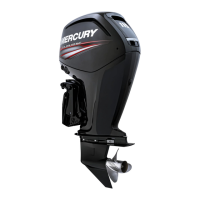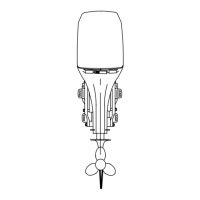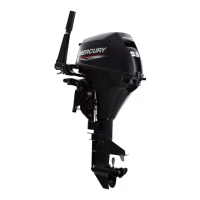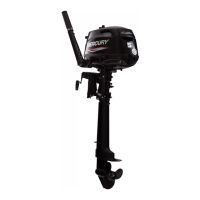• Standing at planing speeds
• Operating at planing speeds in shallow or obstacle‑filled waters
• Sitting on elevated fishing boat decks while the boat is underway
• Releasing your grip on a tiller handle that is pulling in one direction
• Operating the boat while under the influence of drugs or alcohol
• Performing high speed boat maneuvers
While activation of the lanyard stop switch will stop the engine immediately, a
boat will continue to coast for some distance after shutdown. While the boat is
coasting, it can cause injury to anyone in the boat's path as seriously as it
would when under power.
Instruct other occupants on proper starting and operating procedures, should
they be required to operate the engine in an emergency (if the operator is
accidentally ejected).
Accidental or unintended activation of the switch during normal operation is a
possibility. This could cause any of the following potentially hazardous
situations:
• Occupants thrown forward due to the unexpected loss of forward motion,
This is a particular concern for passengers in the front of the boat who
could be ejected over the bow and possibly struck by the gearcase or
propeller.
• Loss of power and directional control in heavy seas, strong current, or
high winds.
• Loss of control when docking.
KEEP THE LANYARD STOP SWITCH AND LANYARD CORD IN GOOD
OPERATING CONDITION
Before each use, check to ensure the lanyard stop switch works properly. Start
the engine and stop it by pulling the lanyard cord. If the engine does not stop,
have the switch repaired before operating the boat.
Before each use, visually inspect the lanyard cord to ensure it is in good
working condition and that there are no breaks, cuts, or wear to the cord.
Check that the clips on the ends of the cord are in good condition. Replace any
damaged or worn lanyard cords.
GENERAL INFORMATION
4 eng

